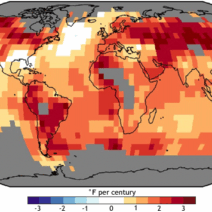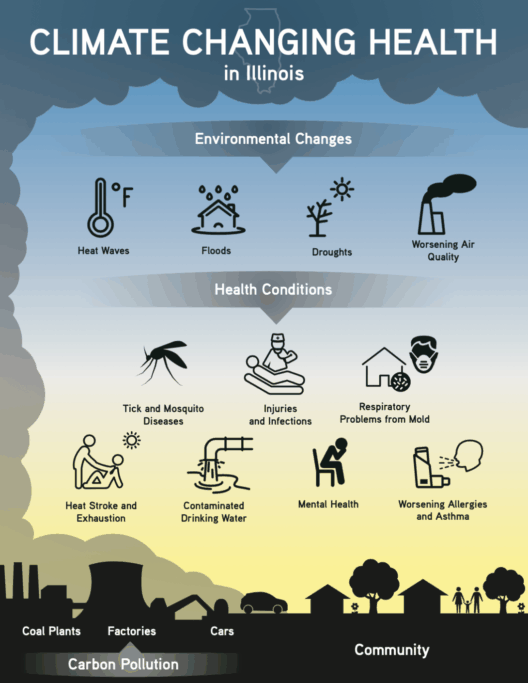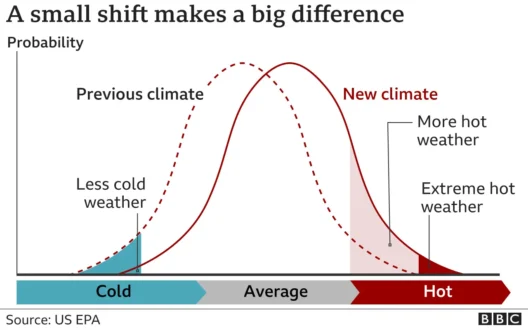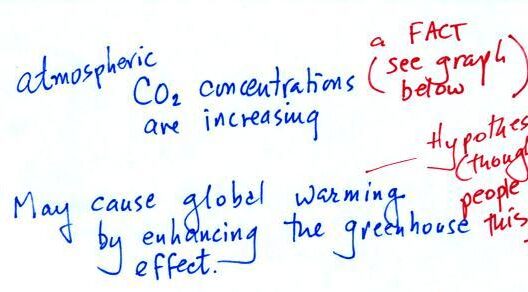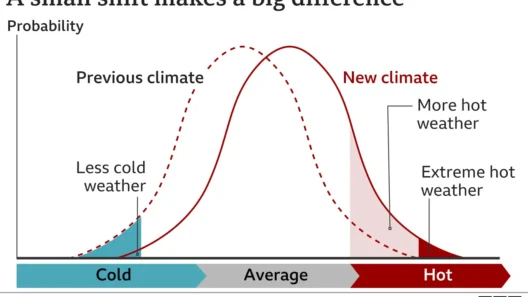Global dimming, a term initially coined in the 1980s, refers to the observed decrease in the amount of sunlight reaching the Earth’s surface due to atmospheric pollution. This phenomenon is paradoxical, especially in the face of the ongoing crisis of global warming. While climate scientists grapple with the implications of rising global temperatures, an undercurrent of curiosity surrounds the interplay between air pollution and the amount of solar radiation that reaches our planet. The stark contrast between the problems posed by global warming and the unintended consequence of global dimming encapsulates a complex narrative regarding humanity’s relationship with the environment.
To comprehend global dimming, it is imperative to investigate its origins. Primarily linked to aerosols—tiny particles suspended in the atmosphere—global dimming occurs as these pollutants scatter and absorb sunlight. When industries burn fossil fuels, they emit these aerosols, which can lead to a reduction in solar radiation. While this can momentarily reduce temperatures, particularly in the atmosphere, it also poses severe long-term ramifications for ecosystems, weather patterns, and climate stability globally.
The implications of global dimming are multifaceted. On the one hand, it poses an intriguing paradox: as pollution increases, some regions experience a cooling effect. In urban areas, where smog tends to be prevalent, annual temperatures may not rise as sharply as they do in cleaner regions. This phenomenon gives a misleading impression of environmental stability, creating a false sense of security amid escalating greenhouse gas emissions. However, this cooling effect does not mitigate the long-term impacts of climate change; rather, it obscures the urgency of addressing greenhouse gas emissions. Essentially, the phenomenon acts as a short-term band-aid in contrast to the looming threat posed by increased carbon dioxide levels.
One of the most notable observations regarding global dimming was articulated in a study conducted by researchers at NASA and the University of Alabama. They noted that between the 1960s and the 1990s, average sunlight reaching the Earth’s surface had been reduced by roughly 10 percent due to particulate matter in the atmosphere. This reduction was more pronounced in industrialized nations where air pollution is at its peak. The darker skies have inadvertently altered climatic patterns, disrupted rainfall distribution, and influenced the hydrological cycle. Such changes can have catastrophic consequences for agriculture, water supply, and biodiversity.
A particularly alarming aspect of global dimming lies in its future trajectory. As nations implement stringent regulations to reduce air pollution—an admirable and necessary goal—they may inadvertently exacerbate global warming. The cleaner air, while beneficial for health, could result in an influx of solar radiation, accelerating temperature rises. Climate models predict that if aerosol levels were to decline significantly, the planet could warm more drastically than previously anticipated. This phenomenon substantiates the argument that a nuanced understanding is critical when addressing climate policy; a comprehensive approach must account for both greenhouse gases and aerosols.
Moreover, the ramifications of global dimming extend beyond temperature shifts; it alters precipitation patterns. Studies show that less sunlight leads to changes in cloud formation and lifespan, resulting in varying regional weather conditions. Some areas may face intensified droughts, while others experience excessive rainfall, leading to flooding. Such unpredictable weather patterns pose a significant challenge to agriculture, forcing farmers to adapt to ever-shifting climates. In regions where crops rely on consistent weather, the unpredictability heralds food insecurity and economic instability.
However, within this paradox lies a potential shift in perspective. Global dimming, though rooted in pollution, provides a unique opportunity to explore geoengineering as a means to combat climate change. Some experts posit that mimicking the natural effects of aerosols could help cool the planet. The concept of creating artificial aerosols to reflect sunlight and reduce temperatures has gathered attention, albeit with substantial ethical considerations and potential unintended consequences. Thus, while creative, any geoengineering initiative must be approached with caution, ensuring that solutions do not create additional ecological predicaments.
Furthermore, the narrative around global dimming serves as a pivotal reminder of the intricate interconnectedness of environmental systems. Humanity’s actions, particularly in the realm of industry and energy production, reverberate deeply across the globe. For example, deforestation and urbanization compound the effects of global warming, while also influencing air quality and, by extension, global dimming. The challenge lies not only in combating one aspect of climate change but in addressing the nexus of human activity that contributes to multiple environmental crises. This broader perspective evokes curiosity about holistic solutions that can synergize efforts to mitigate both warming and pollution.
The discourse surrounding global dimming is still evolving. It prompts critical questions about our future trajectory and the legacy we want to leave for upcoming generations. As awareness grows, communities must engage in a global dialogue that emphasizes sustainability and environmental stewardship. Embracing renewable energy, enhancing air quality standards, and fostering a circular economy are integral components of strategies aimed at addressing the twin challenges of climate change and pollution. Through concerted efforts, a pathway emerges that promises a cleaner, sustainable world where the perils of global warming and the unintended consequences of global dimming can be effectively managed. As we navigate this paradoxical landscape, a deeply held commitment to environmental resilience may shape the next chapter of our planet’s health.
